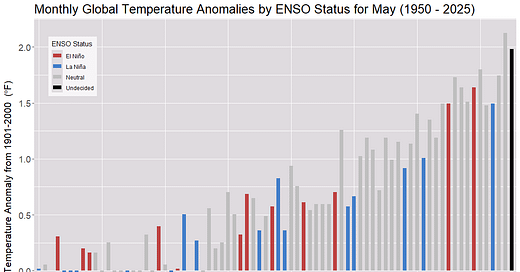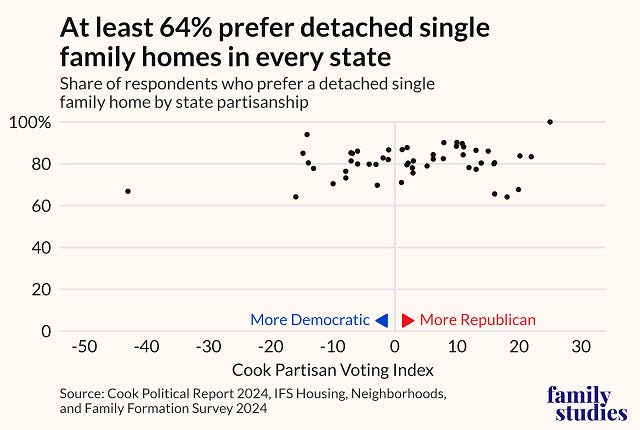As I see it…
Last week I talked about the difference between an analyst and an advocate: an analyst uses data that contradicts their worldview to adjust it, while an advocate disregards or explains away such facts. You can see this effect in online articles that cite other articles supposedly supporting the writer’s argument, but when you click the link, you find that it really doesn’t support it, or at least only does so partially. One example is from the Chronicle of Higher Ed article What Will Be Left of Higher Ed in Four Years? (6/18/2025) The article is largely about the damages (or reforms, depending on your viewpoint) Trump is doing to higher education and which type of colleges will be hurt the most.
Some types of institutions stand to fare better than others in the face of Trump’s moves. Which colleges face the steepest obstacles? Which could emerge relatively unscathed? And what will our system of higher education look like four years from now?
The article does include a nod to other issues at the end of the first paragraph with “Our institutions are already grappling with diminished state support and a looming demographic cliff” (leaving out questions about the value of higher education as another problem), but ultimately the article is about the role of support for higher education from the federal government:
The answers to these questions can be found in the role the federal government has come to play for higher ed. The federal government drives college enrollment though an array of programs: Pell Grants, subsidized and unsubsidized loans, tax-free investment options through 529 plans, supplemental educational-opportunity grants — and the list goes on. Federal student aid topped $256 billion in the 2023-24 academic year. Federal grants are the foundation of the modern academic research enterprise, with federal support for academic research at roughly $60 billion in 2023.
There are many links (or citations), but one, in particular, caught my attention in the section about regional universities and community colleges:
Regional universities and community colleges also face enrollment risks. Pennsylvania State University plans to shutter several regional campuses, and federal pressure on research universities will have knock-on effects within state university systems.
The article implicitly suggests that changes in the federal government's role are causing PSU to close its “regional campuses.” Click the link and read a little, and you first find out that these are not so much full “regional campuses” as satellite campuses.
Called "Commonwealth Campuses," Penn State has 19 satellite campuses away from State College that offer classes and some undergraduate and graduate degrees.
Why is PSU closing some of these satellite campuses?
Bendapudi said multiple factors are behind the pressures facing the Commonwealth Campuses. They mostly enroll students from their surrounding areas, and many Commonwealth Campuses are in areas where the population is declining and is projected to for the next three decades or more.
A second reason, and only two are given, is flat state funding. Still, it seems clear that demographics is the primary reason, and if there aren’t enough students, it doesn’t make sense to keep them. This issue has nothing to do with the federal government.
As I see it, advocacy pieces like this one hurt more than they help. I only knew to click on this particular link due to previous knowledge, and who really has time to check all link citations (I didn’t)? A typical reader will leave with the impression that everything is attributed to Trump. By blurring what can be blamed on Trump and what has nothing to do with Trump, people (I except largely faculty and education administrators) don’t have to grapple with real problems of demographic changes, the cost of higher education, its value to students, and changing societal needs. It would be beneficial for those in higher education to thoughtfully consider what changes might be necessary.
One other paragraph is worth noting and contemplating (bold mine)
Beyond financial support, regulatory advantages such as decentralized quality assurance through accreditation, visa policies that allowed virtually unlimited international student enrollment, and tax-exempt status for most public and private colleges help our institutions flourish. Without the awesome resources and steering power of the federal government, American higher ed as we know it would not be possible.
In other words, higher education in general is very dependent on the federal government. Is this entirely a good thing? As the need for higher education declines with decreasing populations, should this relationship change? As societal needs change, shouldn’t this relationship change (for example, more funding put toward vocational training)? Let me know your thoughts in the comments.
AI use
Gallup published an article titled AI Use at Work Has Nearly Doubled in Two Years on June 16, 2025, that included data about the use of AI. The graph below shows large differences in AI use depending on worker type. Two points. First, if you are using AI regularly to get tasks done, I’d be worried that AI is going to take your job or, minimally, someone can be paid less to do your job with AI.
Second, related to As I See It above, this is another challenge for higher education. Does someone really need to to attend college, let alone for a full 4 years, to learn to do something that AI can already do? There is a real value-added question that higher education needs to figure out.
Clash between renewables and social justice
The World Population Review has a bunch of graphs related to the clean energy supply chain in the article The Secret War Behind Wind, Solar, and EVs (6/24/2025). The graph below left me with the question of whether solar energy is lower in cost because the workers in China get paid little to produce panels. So, is it ok for the green energy revolution to be on the backs of poorly paid and treated Chinese workers?
How hot was May 2025?
Here are your two monthly global temperature anomaly graphs. When considering all months, the May 2025 anomaly was the lowest in about two years. It was, however, the second warmest May. It will officially be a neutral month, and so this year’s neutral ENSO status for May is lower than May 2024, which was also neutral. This is just reasonable variation as the climate warms. Here is what NOAA has to say:
The May 2025 global surface temperature was 1.10°C (1.98°F) higher than the 20th-century average. This was the second-warmest May since NOAA's records began in 1850 (176 years). Only May of 2024 was warmer, with a temperature 0.08°C (0.14°F) higher than 2025. The May 2025 global surface temperature was 0.10°C (0.18°F) higher than in 2020, which currently holds the third-warmest May on record. May 2020 notably marked the first time a May temperature reached 1.0°C (1.8°F) above the 20th-century average. The ten warmest Mays on record have all occurred since 2014. May 2025 also marked the 49th consecutive May with above-average global temperatures.
The IRS has improved efficiency
This graph from USA Facts (6/13/2025) shows that the IRS has become more efficient over time. It is also a wonderful example of the data rule: Normalize properly; ask, “Per what?” In considering the effectiveness of the IRS, it doesn’t make sense to look at only the cost to run it or how much it brings in. On the other hand, an excellent measure of the efficiency of the IRS is normalizing how much it collects by how much it costs to collect on a per $100 basis.
The left and right agree on something
They both prefer living in detached single-family homes. The graph comes from the IFS article Young Americans Want Single-Family Homes (6/19/2025), and young is ages 18-55. The only problem for team D is that living in apartments in cities is green. This is just another challenge, or actually a reality, working against lower CO₂ emissions. There is other worthwhile data in the article.
Mental health break
The LOC has a collection of old photos featuring people enjoying ice cream. (6/26/2025) Here is one of them from 1942.
The spinning CD
If you are of a certain age, you’ll likely get the humor and references here. If not, you’ll likely find the video a bit strange.
Please share and like
Sharing and liking posts attracts new readers and boosts algorithm performance. I appreciate everything you do to support Briefed by Data.
Comments
Please tell me if you believe I expressed something incorrectly or misinterpreted the data. I'd rather know the truth and understand the world than be correct. I welcome comments and disagreement. I encourage you to share article ideas, feedback, or any other thoughts at briefedbydata@substack.com.
Bio
I am a tenured mathematics professor at Ithaca College (PhD in Math: Stochastic Processes, MS in Applied Statistics, MS in Math, BS in Math, BS in Exercise Science), and I consider myself an accidental academic (opinions are my own). I'm a gardener, drummer, rower, runner, inline skater, 46er, and R user. I’ve written the textbooks “R for College Mathematics and Statistics” and “Applied Calculus with R.” I welcome any collaborations.











I have seen it claimed that Chinese PV manufacturers (all the steps in the chain, from basic input chemical and machinery production through polysilicon smelting to module and whole system assembly) are very highly automated. As in, the most highly automated industry in the world. The industry doesn't employ all that many people. It is claimed.
China's advantage may come from cheap electricity (from coal) and manufacturing-friendly financing, regulators and laws. So the concern would be about future generations and their polluted environment rather than current workers. But future Chinese will be richer than today's, and therefore more able to afford to clean up their environment.
Europe, OTOH, leads the world in size of electricity prices and burden of regulations, apparently because of an assumption that future Europeans will be poor: a self-fulfiling prophecy, it seems to me.
The Anglosphere is in the middle, but becoming Europe. The left response in the West is to regulate more, not to make energy more abundant and manufacturing easier. (Subsidies are regulations too.)
The AI thing is interesting for higher ed. That is very true. (Insert Warren Buffet quote about the tide going out revealing who is swimming naked.)